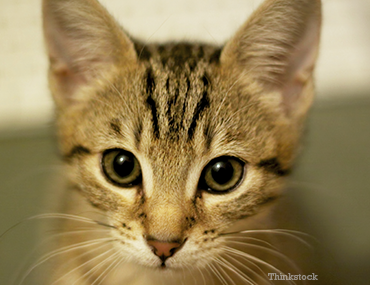 Overview of FIV
Overview of FIV
Some consider feline immunodeficiency virus (FIV) to be the cat equivalent of HIV in humans. FIV causes a highly contagious and potentially fatal retroviral infection that weakens a cat’s immune system, making her susceptible to illness and secondary infection. Also, like HIV, FIV reduces the ability of the immune system to fight infection. Fortunately, despite the similarities, FIV is not zoonotic—so FIV presents no risk to humans.
FIV is often called the “fighting cat” disease as it is commonly spread from cat to cat by fighting (specifically, by biting and scratching). Feline immunodeficiency virus (FIV) and Feline leukemia (FeLV) are among the most common infectious diseases in cats. FIV is nothing to meow about! In a study of more than 18,000 cats, 2.5% of them were positive for FIV.
While all cats are at risk, lifestyle, sex and vaccination status all play an important part in reducing your cat’s risk. The following increase your cat’s risk of contracting FIV:
- Not having been vaccinated against feline leukemia
- Spending time outside
- Exposure to a cat or kitten whose infection status is unknown
- Living in a multiple-cat household
- Not having been spayed or neutered
- Aggressive behavior toward other cats
- Symptoms of oral disease
- Past or present abscess wounds
Symptoms of FIV
Cats with FIV do not always appear sick. In the early stages of the disease, many cats show few signs, so the only way to know for sure if they are infected is through a simple blood test. As the disease advances, the following symptoms may occur:
Diagnosis/Treatment of FIV
Most veterinarians include a screen for FIV as part of the routine tests a cat gets during her lifetime. The American Association of Feline Practitioners (AAFP) recommends testing cats for FIV as follows:
- Cats should be tested at appropriate intervals based on their risk
- Cats and kittens entering a new household should be tested at introduction
- Cats exposed to an infected cat should be tested twice—at the time of exposure and 60 days later
- Cats should be tested before they are vaccinated for FIV
- Cats with clinical signs should be tested
Your veterinarian can run a simple test to see if your cat has been infected with FIV. If the result is negative, they may recommend protecting your cat from FIV by having her vaccinated. The AAFP recommends discussing whether or not your cat should be vaccinated for FIV with your veterinarian. Careful consideration should be taken, as current tests for FIV can’t distinguish between vaccinated and infected cats.
Treatment of FIV
If your cat tests positive for FIV, it is NOT a death sentence! Cats with FIV can live until a ripe old age; many infected senior cats pass as a result of problems not associated with their infection. The AAFP recommends the following for managing the healthy, FIV-positive cat:
- Careful monitoring of any weight loss
- Spaying or neutering intact cats
- Careful control of internal and external parasites
- Keeping infected cats indoors
- Twice a year visits to your veterinarian, paying close attention to lymph nodes and any changes in the mouth
- Discussion with your veterinarian about vaccinations
Yearly blood tests that may include:
- Chemistry tests to evaluate kidney, liver and pancreatic function, as well as sugar levels
- A complete blood count (CBC) to rule out blood-related conditions
- Electrolyte tests to ensure your cat isn’t dehydrated or suffering from an electrolyte imbalance
- Cardiac tests to rule out heart-related issues
Prevention
Make sure your cat is tested for FIV, that you limit her exposure to other cats you don’t know, and talk to your veterinarian about whether or not your cat should be vaccinated against FIV.
To find out more about this disease and how to keep your cat healthy, visit http://www.kittytest.com/.
If you have any questions or concerns, you should always visit or call your veterinarian – they are your best resource to ensure the health and well-being of your pets.
